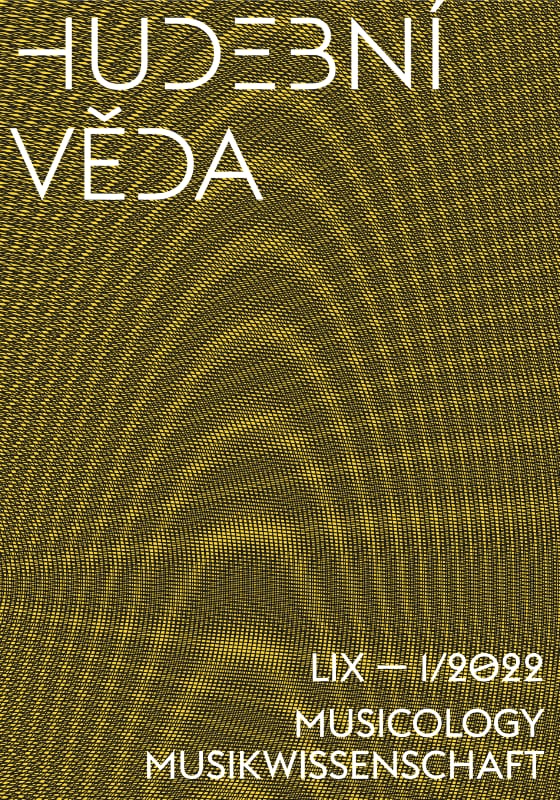Článek | Article
Autor:
Jiří Sehnal
Název:
Varhany a hudba u cisterciáků na Velehradě
Variantní název:
The Organ and Music of the Cistercians at Velehrad
Zdrojový dokument:
Hudební věda LIX (2022), č. 1, s. 29–79.
DOI:
https://doi.org/10.54759/MUSICOLOGY-2022-0102
Trvalý odkaz:
https://kramerius.lib.cas.cz/uuid/uuid:f09d853f-2392-4425-990a-ab3cdb7f0e92
České resumé:
Cisterciácký klášter byl na Velehradě založen roku 1205. Roku 1421 jej zničili husité. Klášter dosáhl svého vrcholného rozkvětu v polovině 18. století. V roce 1784 byl císařem Josefem II. zrušen a klášterní kostel se stal kostelem farním.
První varhany postavil na figurálním kůru na západní straně roku 1700 brněnský varhanář Jan David Sieber (zemř. 1723). V letech 1745–1747 je rozšířil jeho žák Anton Richter (1688–1765). V té době to byly jedny z největších varhan v českých zemích. Měly dva manuály a 31 rejstříků. Šlo vlastně o dva samostatné nástroje, rozdělené do dvou křídel. Levé křídlo obsahovalo původní Siebrovy varhany, pravé křídlo Richtrovy varhany.
Od šedesátých let 19. století, kdy se Velehrad stal poutním místem, se ukázalo, že barokní varhany na doprovod zpěvu velkého množství lidí nestačí. Proto byly v roce 1924 přestavěny firmou Strmiska – Imrich na pneumatický systém s romantickou disposicí. V roce 1963 byly nahrazeny novým nástrojem od firmy Varhany. Ze starých varhan se dochovala jen bohatě zdobená barokní skříň.
Figurální hudba u cisterciáků na Velehradě začala být pěstována až koncem 17. století a dosáhla svého vrcholu v polovině 18. století. Svědectví o ní podává především instrumentář kláštera. Hudební sbírka se bohužel nedochovala.
Kantorem kláštera byl Bernard Strauhal (nar. v Kroměříži 1738, zemř. v Uherském Hradišti 1813). Jeho skladby se dochovaly v opisech mimo Velehrad. Nejzajímavější je 17 partit pro dechový kvintet nebo sextet (2 hoboje, 2 lesní rohy, 1 nebo 2 fagoty) v hudební sbírce cisterciáckého kláštera v Oseku v Čechách. Obsahují imitace dud (La Zampagna) a hlasů ptáků. Zvláště pozoruhodné je použití hanáckých tanců v triích tanečních vět. Setkáváme se v nich často s lydickou tóninou, která byla pro lidovou hudbu na Moravě typická.
English summary:
The Cistercian monastery at Velehrad was founded in 1205. In 1421 it was destroyed by Hussites. It was subsequently restored, reaching its heyday in the mid-18th century. In 1784 it was dissolved by the Emperor Joseph II, and the monastery church was transformed to parish church.
The church’s first organ, installed in the figural choir to the west of the nave, was built in 1700 by Brno-based organ builder Jan David Sieber (d. 1723). Between 1745 and 1747 it was expanded by his pupil, Anton Richter (1688-1765). With its two manuals and 31 stops, it was then one of the largest organs in the Czech lands. It was actually comprised of two separate instruments forming two wings. The left wing consisted of Sieber’s original instrument, juxtaposed by Richter’s organ on the right.
By the 1890s, when Velehrad became a place of pilgrimage, it was obvious that the Baroque organ was inadequate for the accompaniment of singing by a large crowd of people. Therefore it was re-built in 1924, by the firm Strmiska – Imrich, to pneumatic action with a romantic disposition. In 1963 the organ was replaced by a new instrument built by the firm Varhany. All that has remained of the old organ is a copiously decorated Baroque case.
Cistercians´ figural music at Velehrad began to be cultivated only in the late 17th century, reaching its peak in the mid-18th century. It is attested to most demonstrably by the monastery´s list of instrumental combinations. Regrettably, its collection of music has not survived.
The monastery’s cantor was Bernard Strauhal (b. 1738 in Kroměříž – d. 1813 in Uherské Hradiště). Some of his compositions have survived in copies, outside Velehrad. The most interesting of these is a collection of 17 partitas for wind quintet or sextet (two oboes, two horns, one or two bassoons), kept in the collection of music of the Cistercian monastery at Osek, Bohemia. Its parts include imitations of bagpipe (La Zampagna) and bird sounds. Of particular interest is the employment there of dance forms from the Haná region in the trios of the dance movements. They often include the use of the Lydian mode, typical for Moravian folk music.
Klíčová slova:
klášter cisterciáků Velehrad; stavba varhan na Moravě; figurální varhany na Velehradě 1747; chorální varhany v klášterech; Antonín Richter; Jan David Sieber; Bernard Strauhal; hanácké tance v 18. století; partity pro dechový sextet
Keywords:
Cistercian monastery Velehrad; construction of the organ in Moravia; figural organ in Velehrad 1747; choral organ in monasteries; Antonín Richter; Jan David Sieber; Bernard Strauhal; dances from Haná in the 18th century; wind sextet scores

